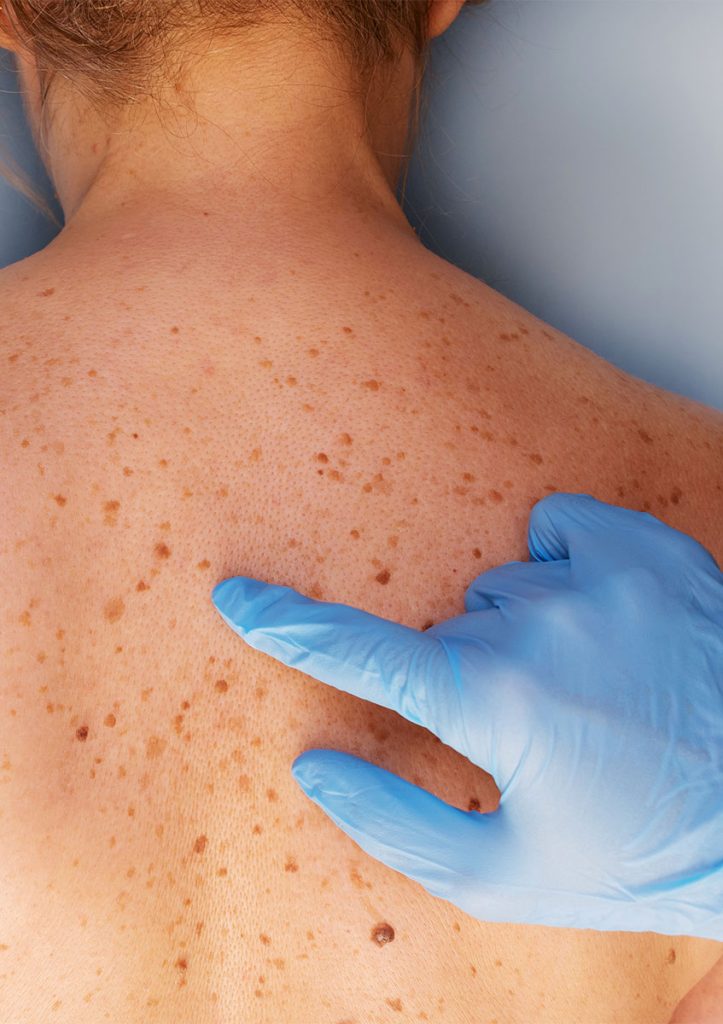West Michigan Plastic Surgery
8175 Creekside Drive, Suite 100
Portage, MI 49024
Phone: (269) 222-1611
Monday–Thursday: 8 a.m.–5 p.m.
Friday: 8 a.m.–4 p.m.
West Michigan Plastic Surgery
3035 Capital Ave SW, Suite 110
Battle Creek, MI 49015
Phone: (269) 222-1611
Tuesday: 8 a.m.–5 p.m.
Friday: 12:30 p.m.–4 p.m.
Remove All Signs of Skin Cancer
Getting a skin cancer diagnosis can be scary, but when skin cancer is diagnosed early and removed with Mohs reconstruction, patients can recover well. However, after the affected tissue is removed by the initial surgery, Mohs reconstruction surgery may be necessary.
At West Michigan Plastic Surgery, Kalamazoo, Dr. Scott Holley utilizes his surgical expertise to ensure the best possible cosmetic and functional result from your Mohs reconstruction surgery. Dr. Holley typically performs multiple Mohs reconstructive surgeries every week, utilizing the plastic surgery techniques of complex closure, skin flap rearrangement, and skin grafting.
What Is Mohs Reconstruction Surgery?
Mohs reconstruction surgery is done to reconstruct the surgical site after successfully removing skin cancer using Dermatologic Mohs surgery.
Mohs surgery also known as Mohs micrographic surgery or Mohs, is a highly effective treatment for certain types of skin cancer, especially basal cell carcinoma and squamous cell carcinoma.
Mohs is a surgical technique in which layers of cancer-containing skin are progressively removed until the patient is cancer-free. It is the preferred method for treating skin cancer in delicate areas such as the face and hands, because it keeps the incision small, and preserves as much healthy tissue as possible.
Candidates For Mohs Reconstruction Surgery
People that would like to improve the look of damaged skin tissue left behind by Mohs reconstruction are usually good candidates for Mohs reconstruction surgery. Candidates should also be healthy and non-smokers.
Mohs reconstruction is NOT cosmetic surgery and is ALWAYS covered by medical insurance.
Your Mohs Reconstruction Consultation
During your consultation, Dr. Holley will work with you to create a reconstructive plan that will return you to your normal appearance as quickly as possible. He will also discuss surgical risks, what to expect on the day of surgery, and review post-surgical instructions.
How Does It Work?
Mohs reconstruction surgery can be done under local or general anesthesia and takes about one hour to perform. The technique used will depend on the size and location of the defect. Sutures are used in cases where the defect is small, but larger defects may require a local flap or skin graft.
A local flap uses surrounding tissue to close the defect. This technique works best for small wounds because the nearby skin and tissue are stretched to cover the wound. Local flaps provide very good aesthetic results since the flap has identical skin texture and color as the defect.
A skin graft is used for larger defects that cannot be covered with a local flap. It involves taking skin from another area of the body (donor site), which is usually far from the surgical site.
Results
Results are immediate after Mohs reconstruction surgery. However, patients must carefully follow post-operative instructions regarding wound care. Simple repairs often heal within weeks but more extensive flaps and grafts may take months to fully mature.
Recovery
Swelling and bruising can occur after Mohs surgery and is highly dependent on the reconstructive technique needed. In most cases, however, mild discomfort and swelling should be expected for 7-10 days. Light activities can be resumed after a few days, but strenuous exercise should be avoided for at least 3 weeks. Most patients can return to work within one week after surgery.

